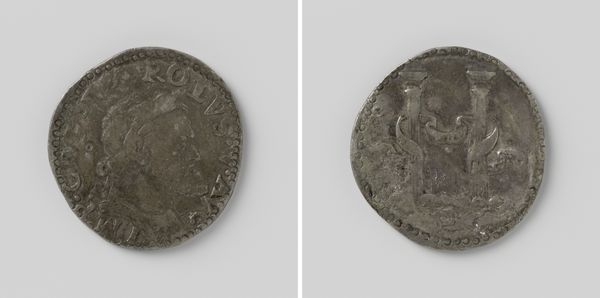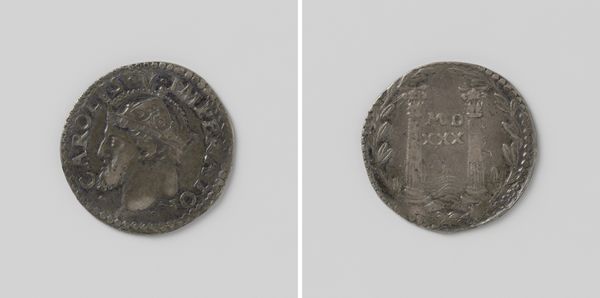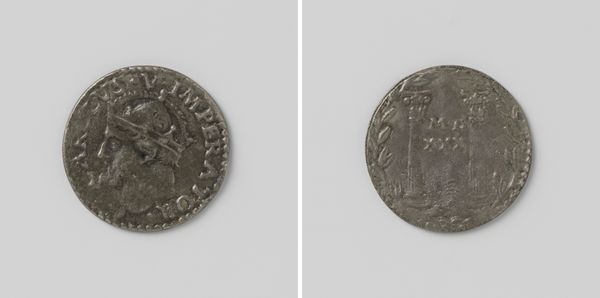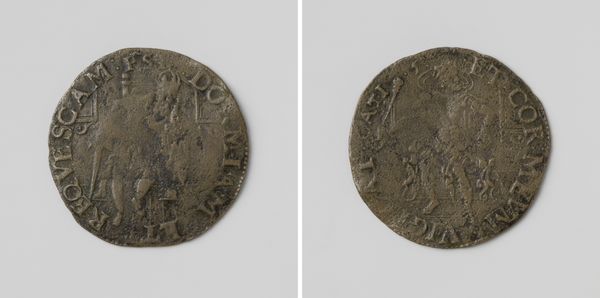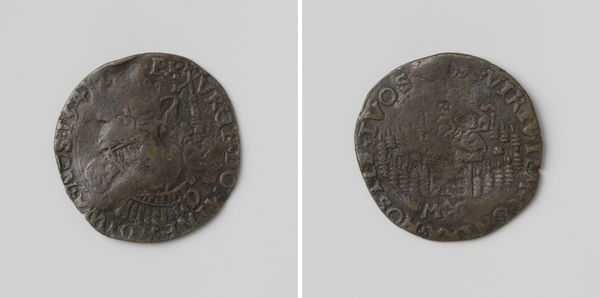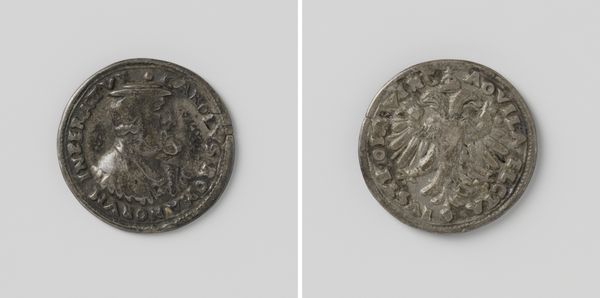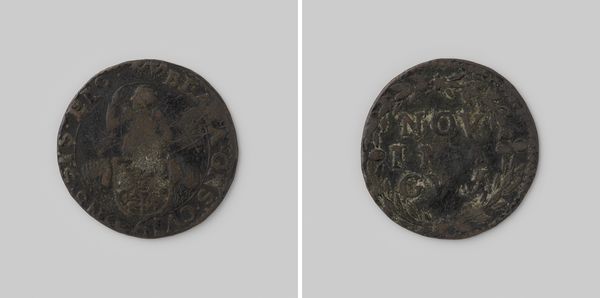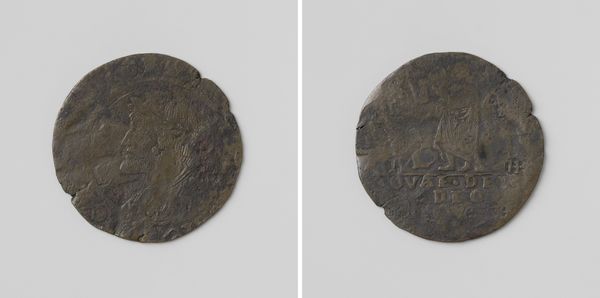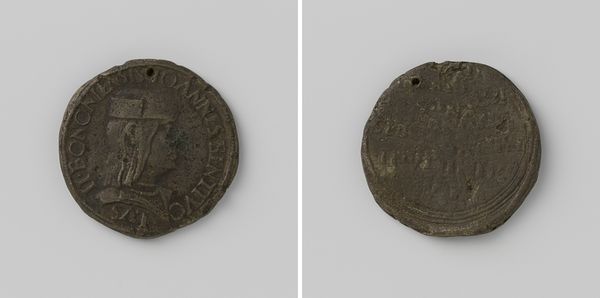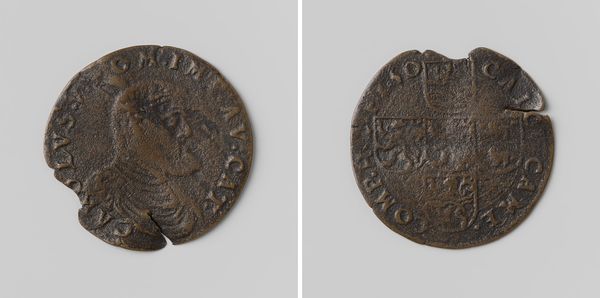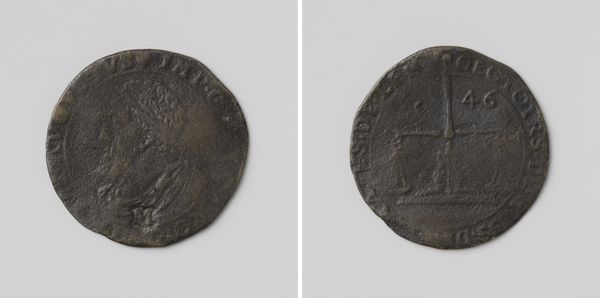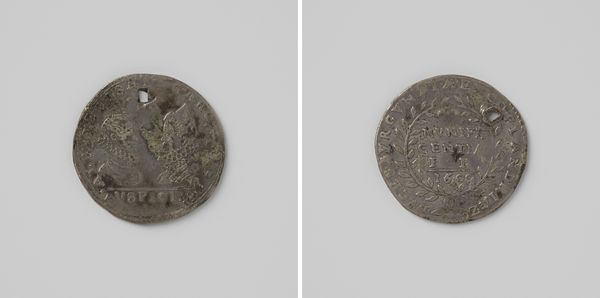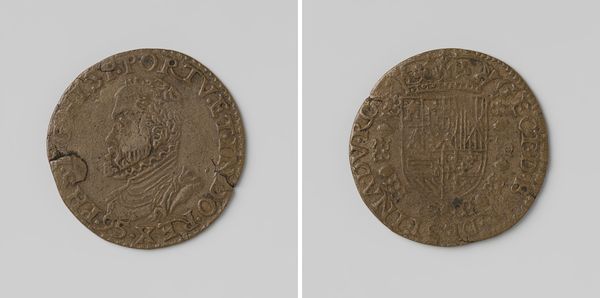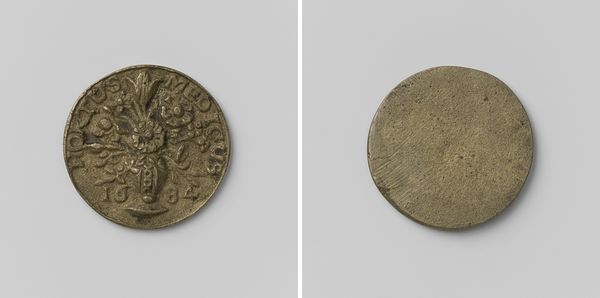
metal
#
portrait
#
metal
#
ancient-mediterranean
Dimensions: diameter 2.3 cm, weight 2.23 gr
Copyright: Rijks Museum: Open Domain
Curator: This is a fascinating coin, a 'Milaan', minted in 1521 under Charles V, the Holy Roman Emperor. You can see it here at the Rijksmuseum. Editor: It looks so worn down! Its roughness speaks to the vast passage of time and, I suppose, its constant circulation through the hands of merchants and ordinary people alike. There's a quiet dignity despite the surface degradation. Curator: That’s interesting. Thinking about who held the coin helps us understand the flow of power and wealth in the 16th century. Consider that this coin, a token of Imperial authority, was circulating at a time of immense political and religious upheaval in Europe. The rise of Protestantism, colonial expansion, and near-constant warfare. Editor: Precisely. And what about the imagery itself? On one side, we have Charles V rendered in effigy – though rather schematically, I must admit. Then, on the reverse, those intriguing heraldic devices. Their arrangement feels very deliberate, a potent display of power. Curator: Indeed, but what does that heraldic display actually mean in the context of that individual holder? How would the circulation of images, the very touch of this metal have informed and reified power for its users, both the powerful, and the relatively disempowered? And how does that relate to our contemporary understandings of power and the imagery that encodes it? Editor: Ah, a key point. How this imagery operated as cultural shorthand. We may not instantly recognize every symbol, but to people then, these images carried layers of meaning about lineage, legitimacy, and divine right. Think of them almost as carefully curated "brands" for the Habsburg dynasty. Curator: But doesn't focusing on its symbolic and political functions flatten it a little? This isn't simply a brand, this is something someone touched, kept, and then discarded into history. Isn't it vital we engage with those possibilities of personhood that exceed the intentions of powerful iconographers? Editor: An excellent point, though in the end, both considerations are clearly not mutually exclusive, but reciprocal. A rich dialogue with the object and its past! Curator: Absolutely, it’s a reminder that artifacts like these aren't just passive historical records, but active participants in the shaping of social and political landscapes, both then and potentially, if indirectly, today.
Comments
No comments
Be the first to comment and join the conversation on the ultimate creative platform.
